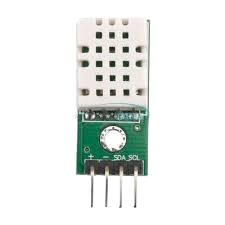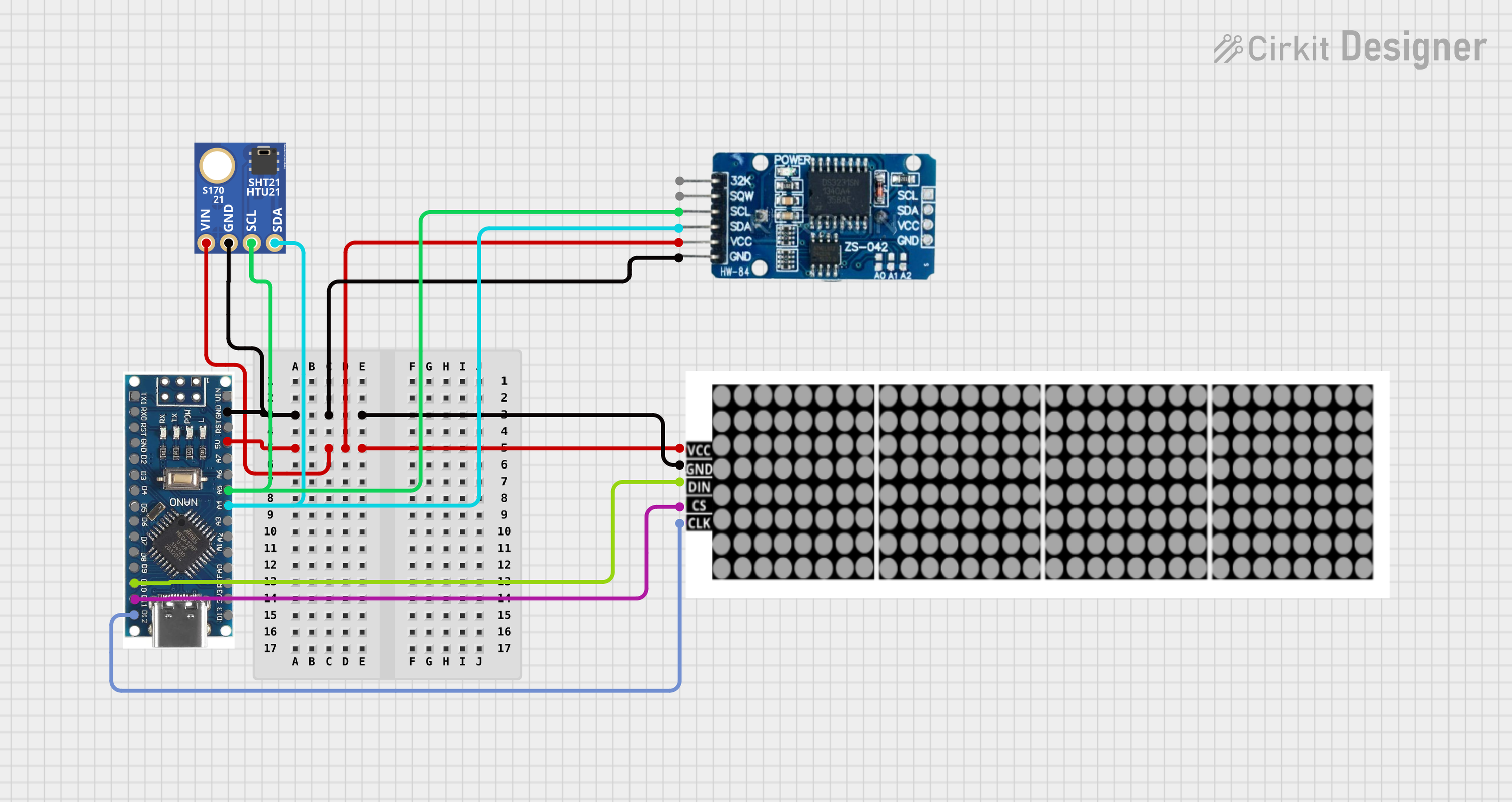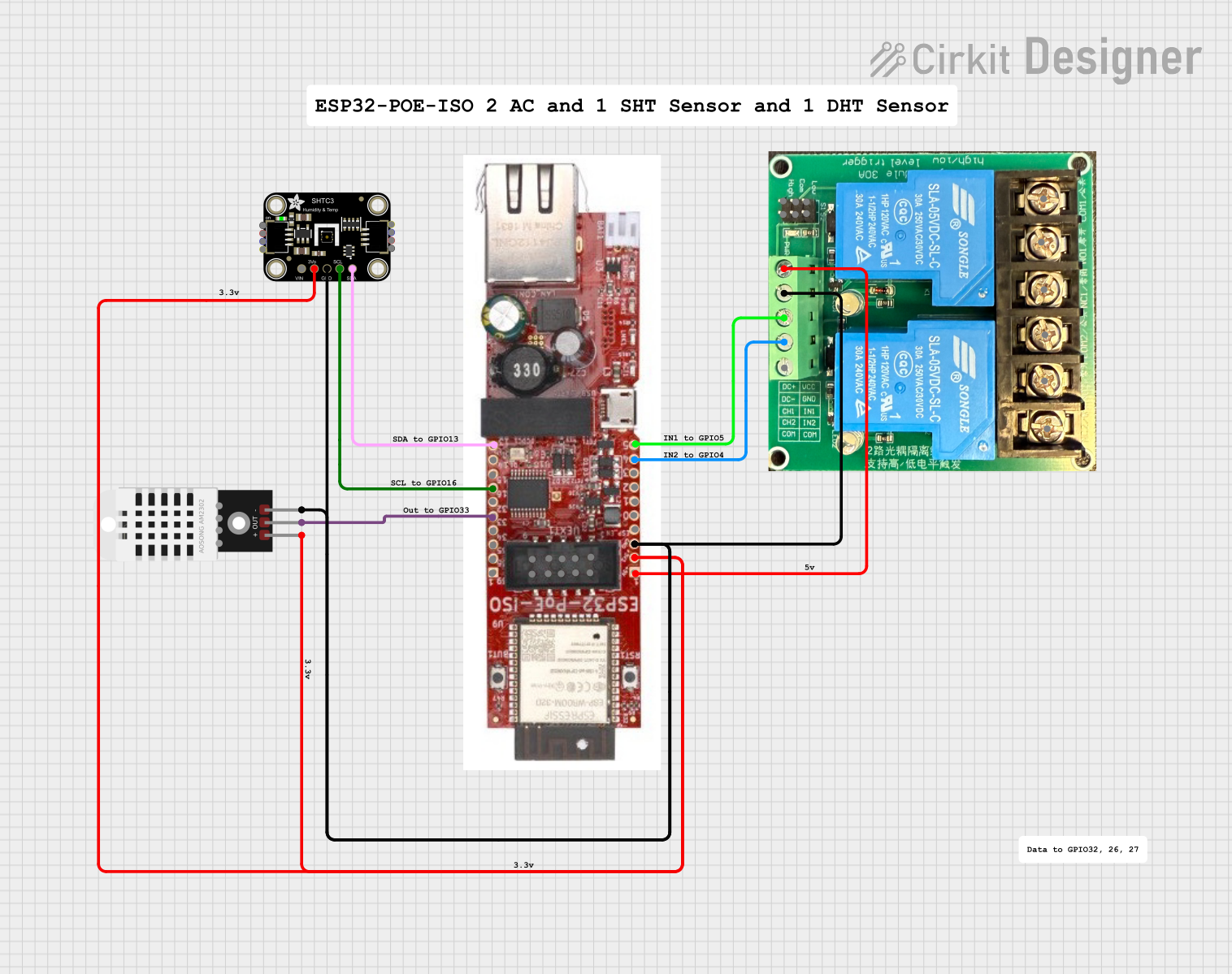
How to Use SHTC3: Examples, Pinouts, and Specs

 Design with SHTC3 in Cirkit Designer
Design with SHTC3 in Cirkit DesignerIntroduction
The SHTC3 is a digital humidity and temperature sensor designed for high accuracy and low power consumption. It is equipped with an I2C interface, making it easy to integrate into a wide range of applications. The sensor is ideal for use in HVAC systems, weather monitoring stations, consumer electronics, and other environments where precise environmental measurements are required. Its compact size and energy efficiency make it particularly suitable for battery-powered devices.
Explore Projects Built with SHTC3

 Open Project in Cirkit Designer
Open Project in Cirkit Designer
 Open Project in Cirkit Designer
Open Project in Cirkit Designer
 Open Project in Cirkit Designer
Open Project in Cirkit Designer
 Open Project in Cirkit Designer
Open Project in Cirkit DesignerExplore Projects Built with SHTC3

 Open Project in Cirkit Designer
Open Project in Cirkit Designer
 Open Project in Cirkit Designer
Open Project in Cirkit Designer
 Open Project in Cirkit Designer
Open Project in Cirkit Designer
 Open Project in Cirkit Designer
Open Project in Cirkit DesignerTechnical Specifications
- Supply Voltage: 1.62V to 3.6V
- Current Consumption:
- Measurement mode: 2.4 µA (typical)
- Idle mode: 0.3 µA (typical)
- Humidity Measurement Range: 0% to 100% RH
- Temperature Measurement Range: -40°C to 125°C
- Accuracy:
- Humidity: ±2% RH (typical)
- Temperature: ±0.2°C (typical)
- Communication Interface: I2C (up to 1 MHz)
- Operating Temperature: -40°C to 125°C
- Package: DFN-6 (2.5 mm x 2.5 mm x 0.9 mm)
Pin Configuration and Descriptions
The SHTC3 sensor has six pins, as described in the table below:
| Pin Number | Pin Name | Description |
|---|---|---|
| 1 | VDD | Power supply (1.62V to 3.6V) |
| 2 | GND | Ground |
| 3 | SDA | I2C data line |
| 4 | SCL | I2C clock line |
| 5 | nRESET | Optional reset pin (active low) |
| 6 | ADDR | Address selection (connect to GND) |
Usage Instructions
How to Use the SHTC3 in a Circuit
- Power Supply: Connect the VDD pin to a 1.62V to 3.6V power source and the GND pin to ground.
- I2C Interface: Connect the SDA and SCL pins to the corresponding I2C data and clock lines of your microcontroller. Use pull-up resistors (typically 4.7 kΩ) on both lines.
- Address Selection: The ADDR pin should be connected to GND to set the I2C address.
- Optional Reset: The nRESET pin can be used to reset the sensor. If unused, leave it unconnected.
Important Considerations
- Ensure the power supply voltage is within the specified range to avoid damaging the sensor.
- Place the sensor in a location where it can accurately measure ambient conditions without interference from heat sources or airflow.
- Use decoupling capacitors (e.g., 0.1 µF) near the VDD pin to stabilize the power supply.
Example Code for Arduino UNO
Below is an example of how to interface the SHTC3 with an Arduino UNO using the I2C protocol:
#include <Wire.h>
#include <Adafruit_SHTC3.h>
// Create an instance of the SHTC3 sensor
Adafruit_SHTC3 shtc3;
void setup() {
Serial.begin(9600); // Initialize serial communication
while (!Serial) delay(10); // Wait for serial monitor to open
Serial.println("SHTC3 Test");
if (!shtc3.begin()) {
Serial.println("Couldn't find SHTC3 sensor!");
while (1) delay(10); // Halt if sensor initialization fails
}
Serial.println("SHTC3 sensor initialized.");
}
void loop() {
sensors_event_t humidity, temp;
// Perform a measurement
if (shtc3.getEvent(&humidity, &temp)) {
Serial.print("Temperature: ");
Serial.print(temp.temperature);
Serial.println(" °C");
Serial.print("Humidity: ");
Serial.print(humidity.relative_humidity);
Serial.println(" %");
} else {
Serial.println("Failed to read data from SHTC3 sensor!");
}
delay(2000); // Wait 2 seconds before the next measurement
}
Notes:
- Install the Adafruit SHTC3 library via the Arduino Library Manager before using the code.
- Ensure the I2C pull-up resistors are properly connected to the SDA and SCL lines.
Troubleshooting and FAQs
Common Issues
Sensor Not Detected:
- Cause: Incorrect I2C wiring or address mismatch.
- Solution: Verify the SDA and SCL connections and ensure the ADDR pin is connected to GND.
Inaccurate Readings:
- Cause: Sensor exposed to contaminants or placed near heat sources.
- Solution: Clean the sensor with compressed air and relocate it to a better environment.
Communication Errors:
- Cause: Missing or incorrect pull-up resistors on I2C lines.
- Solution: Add 4.7 kΩ pull-up resistors to SDA and SCL.
FAQs
Q: Can the SHTC3 operate at 5V?
A: No, the maximum supply voltage is 3.6V. Use a voltage regulator if your system operates at 5V.Q: How do I reset the sensor?
A: Pull the nRESET pin low for at least 1 µs, or use the software reset command via I2C.Q: What is the default I2C address of the SHTC3?
A: The default 7-bit I2C address is0x70.
By following this documentation, you can effectively integrate the SHTC3 sensor into your projects and troubleshoot common issues.